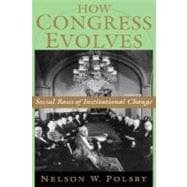
What is included with this book?
| Introduction | p. 3 |
| The House in Sam Rayburn's Time | p. 7 |
| A Conservative House: 1937-57 | p. 7 |
| After the 1958 Election: Frustration | p. 20 |
| The Rump Session of 1960 | p. 30 |
| Packing the Rules Committee by Avoiding the Democratic Caucus: 1961 | p. 31 |
| Toward Liberalization | p. 36 |
| Succession to Rayburn | p. 36 |
| Conflict within the Caucus: Liberals against the Leadership, 1963 | p. 40 |
| Incremental Committee Packing: Appropriations, 1963 | p. 44 |
| Republican Committee Packing: Maintaining the Party Mainstream, 1961-63 | p. 50 |
| The Landslide: 1964 | p. 56 |
| The Democratic Study Group Uses the Caucus: 1967-72 | p. 59 |
| Fallout from Watergate: The Caucus Puts Seniority under Siege | p. 65 |
| A Remodeled House | p. 73 |
| Causes of Liberalization | p. 75 |
| The House Democratic Caucus | p. 75 |
| The Rise of the Two-Party South | p. 80 |
| Southern Republicans in the 1990s: A Group Portrait | p. 97 |
| Consequences: Toward a More Responsible Two-Party System? | p. 109 |
| The Retreat from Bipartisanship in Committee | p. 114 |
| Two Strategies of Opposition | p. 124 |
| An Era of Ill-Feeling | p. 130 |
| Tyranny Tempered by Assassination | p. 137 |
| Overview: How Congress Evolves | p. 145 |
| Innovation and Stalemate | p. 145 |
| Overview of the House | p. 148 |
| Stories about Change | p. 151 |
| Methods and Sources | p. 156 |
| Notes | p. 171 |
| Index | p. 251 |
| Table of Contents provided by Ingram. All Rights Reserved. |
The New copy of this book will include any supplemental materials advertised. Please check the title of the book to determine if it should include any access cards, study guides, lab manuals, CDs, etc.
The Used, Rental and eBook copies of this book are not guaranteed to include any supplemental materials. Typically, only the book itself is included. This is true even if the title states it includes any access cards, study guides, lab manuals, CDs, etc.